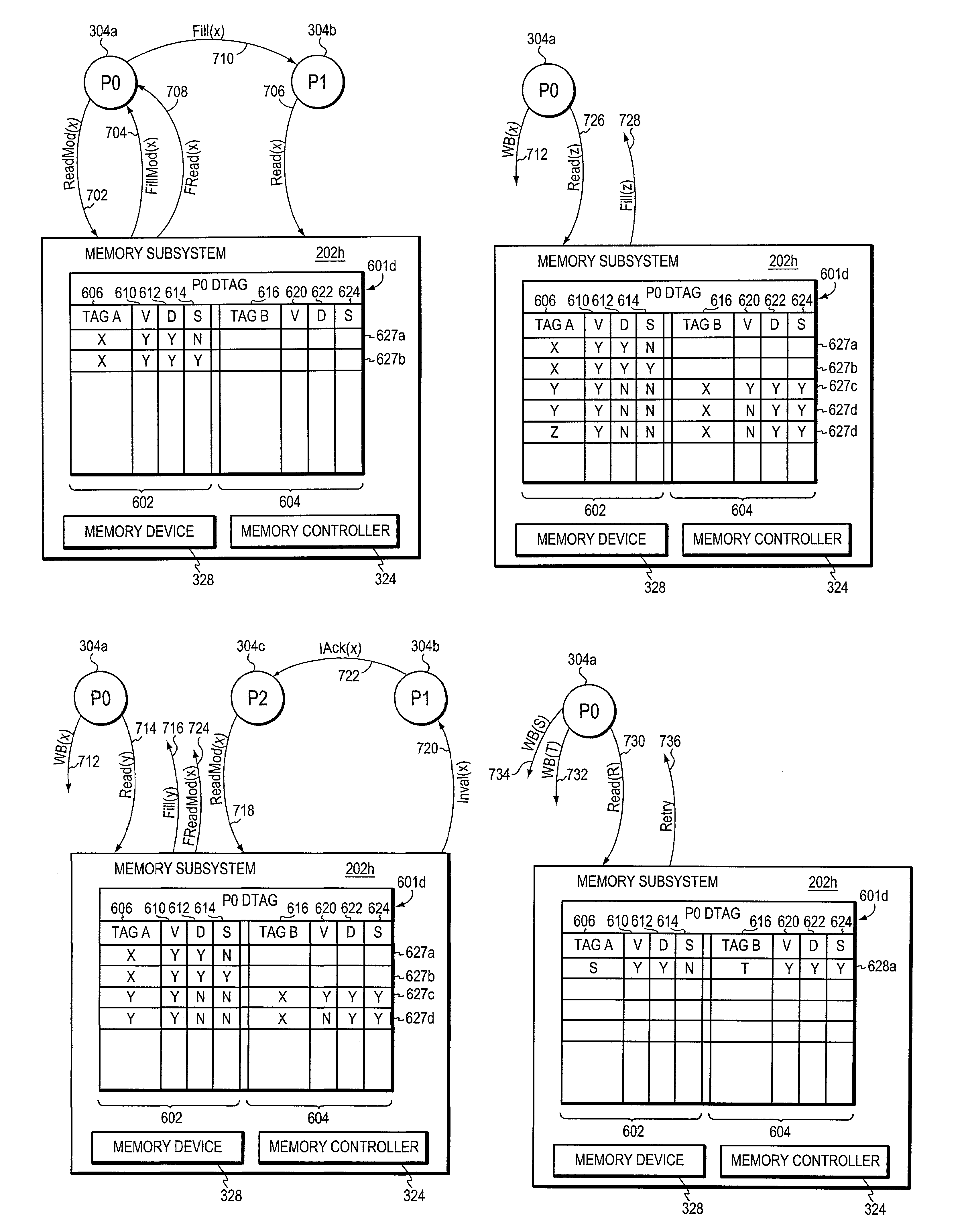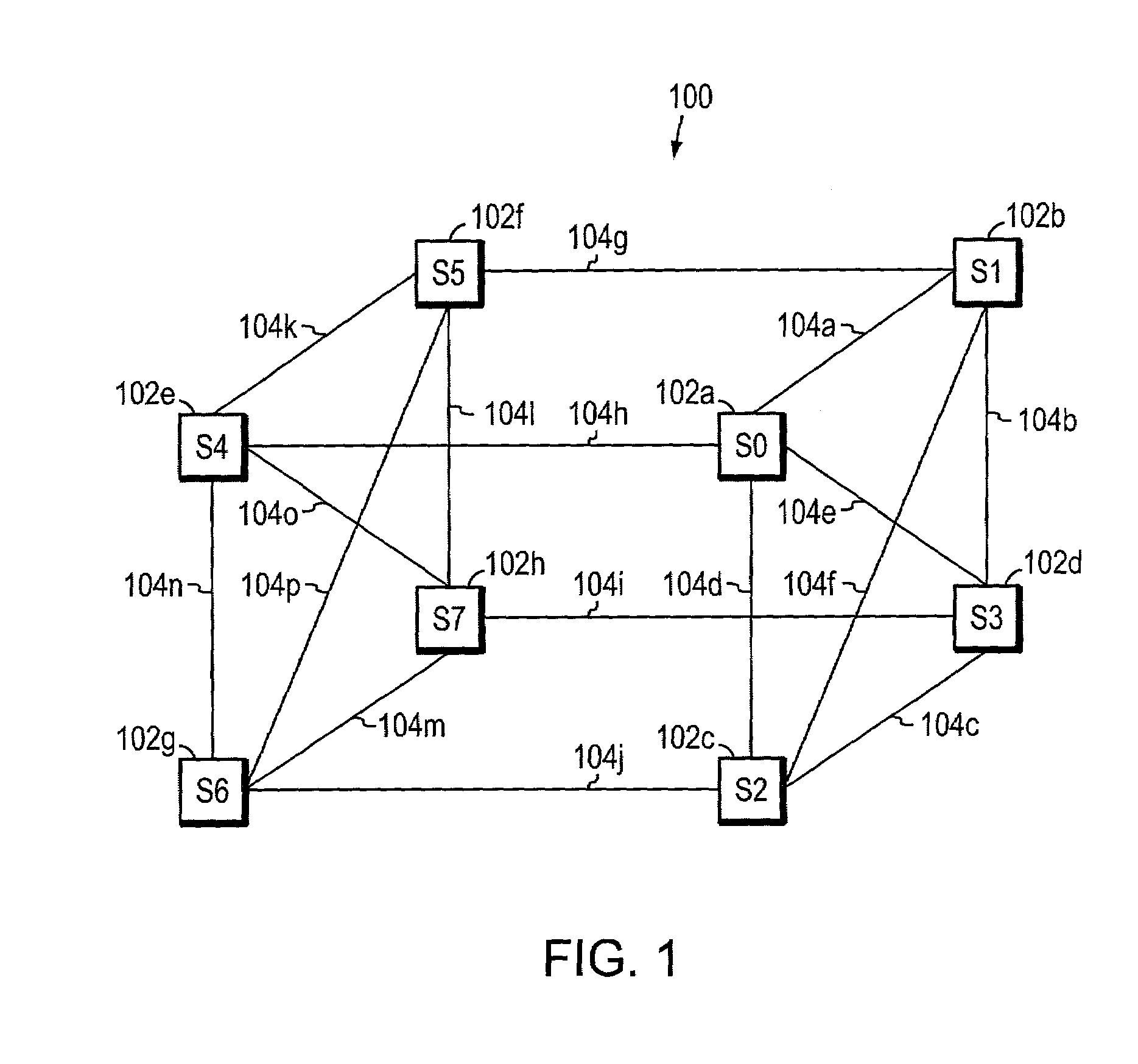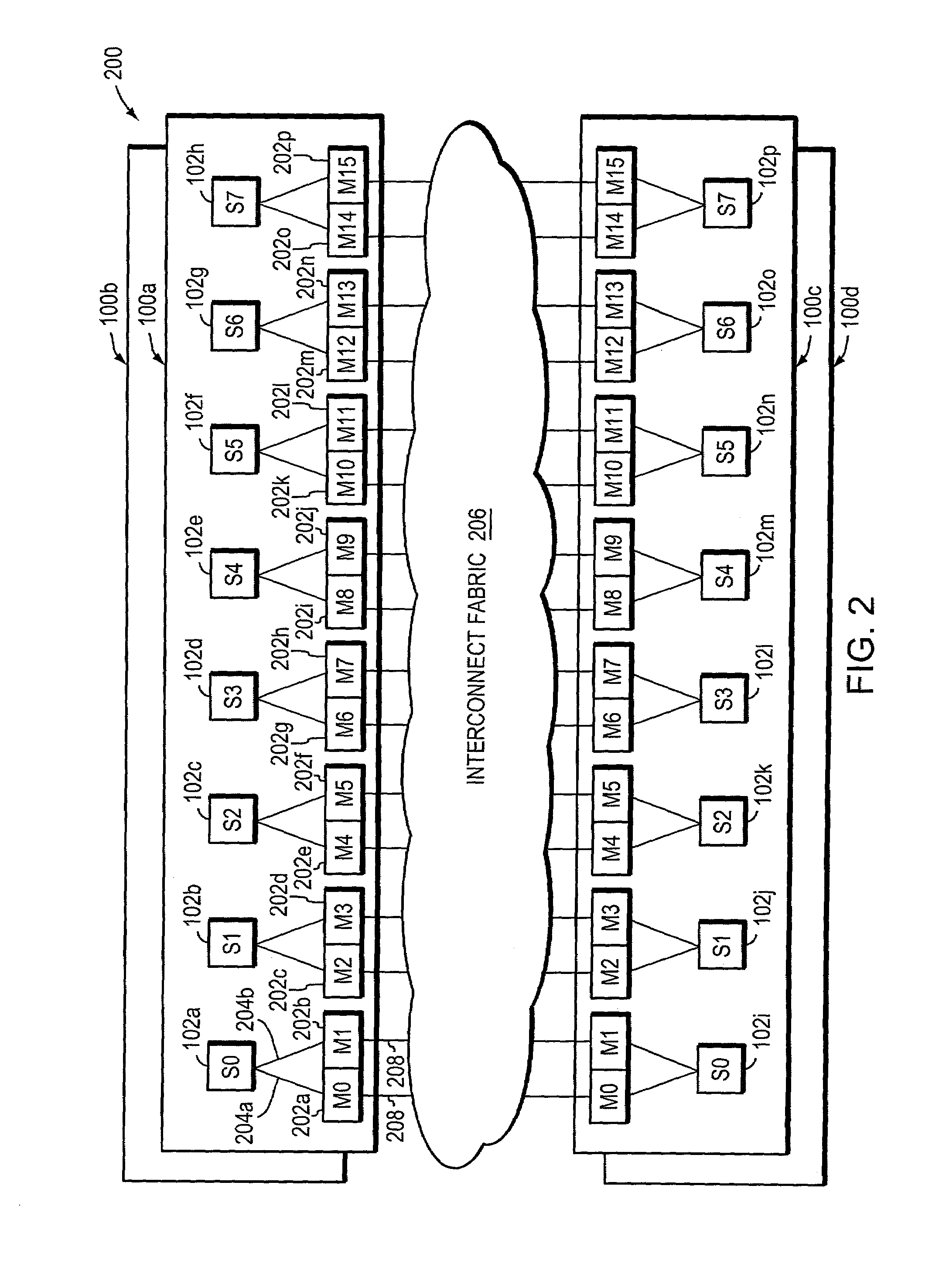System and method enabling efficient cache line reuse in a computer system
- Summary
- Abstract
- Description
- Claims
- Application Information
AI Technical Summary
Benefits of technology
Problems solved by technology
Method used
Image
Examples
Embodiment Construction
[0031]FIG. 1 is a highly schematic illustration of a preferred multiprocessor node 100 for use with the present invention. The node 100 comprises a plurality of, e.g., eight, sockets, S0–S7, which are designated by reference numerals 102a–h. The eight sockets 102a–h are logically located in three-dimensional space at the corners of a cube, and are interconnected by a plurality of inter-processor links 104a–p. Thus, each socket can communicate with any other socket of the node 100. In the illustrative embodiment, sockets forming two opposing sides of the node 100 are fully interconnected, while the two sides are connected only along the edges of the cube. That is, sockets S0–S3, which form one side of the cube, and S4–S7, which form the opposing side of the cube, are fully interconnected with each other, while the two opposing sides are connected by four inter-socket links 104g–j. As described herein, each socket includes one or more processors and has or is coupled to two main memor...
PUM
 Login to View More
Login to View More Abstract
Description
Claims
Application Information
 Login to View More
Login to View More - R&D
- Intellectual Property
- Life Sciences
- Materials
- Tech Scout
- Unparalleled Data Quality
- Higher Quality Content
- 60% Fewer Hallucinations
Browse by: Latest US Patents, China's latest patents, Technical Efficacy Thesaurus, Application Domain, Technology Topic, Popular Technical Reports.
© 2025 PatSnap. All rights reserved.Legal|Privacy policy|Modern Slavery Act Transparency Statement|Sitemap|About US| Contact US: help@patsnap.com



